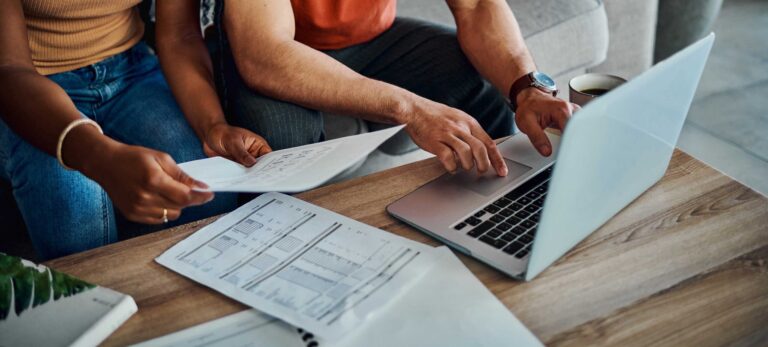
Is Bankruptcy the Right Choice? Understanding Your Options
Bromwich+Smith team
17 Jan, 2025
When faced with financial struggles, it’s easy to feel alone and overwhelmed with stress. Every year, tens of thousands of Canadians fall behind on their monthly bills. This can cause additional strain brought on by constant creditor phone calls and letters demanding payment. What can you do when you don’t have enough money to make your bill payments? You may find yourself searching online for debt relief options and feeling intimidated by the word bankruptcy. Bankruptcy is often associated with shame and guilt when it should be viewed as a legal solution designed to help individuals get a fresh financial start. In this blog, we’ll break down the facts about bankruptcy in Canada, the steps involved, and how to know if bankruptcy is the right debt relief solution for you.
What is bankruptcy?
Bankruptcy is a legal process under Canada’s Bankruptcy and Insolvency Act (BIA) designed to provide relief to individuals who cannot repay their debts. In Canada bankruptcy is regulated through the Government of Canada and the Office of the Superintendent of Bankruptcy (OSB).
To file for bankruptcy, you must show that you’re insolvent, meaning you’re unable to meet your financial obligations due to your debt being greater than the value of what you can repay. This method allows you to wipe the slate clean and start rebuilding your credit. That said, it comes with responsibilities and consequences.
Bankruptcy in Canada is overseen by Licensed Insolvency Trustees (LITs), who are federally regulated professionals that guide individuals through the process. Their role is to fairly distribute an individuals’ assets among creditors while giving that individual an opportunity to rebuild financially.
Signs you should consider bankruptcy
Recognizing when bankruptcy might be the right step can be difficult. While no one wants to be faced with financial problems, ignoring the signs can lead to even greater issues. Remember, the earlier you can see the signs in yourself the sooner you’re able to make an informed decision about what steps to take to reduce your debt.
- Continual debt cycle: If you find yourself relying on credit to pay for basic living expenses or using one credit card to pay off another
- Missed payments: Consistently missing payments on credit cards, loans, or utility bills
- Creditor harassment: Frequent calls or letters from creditors and collection agencies
- Garnished wages: If your wages are being garnished to cover debts or the creditors calling are threatening to garnish your wages
- No savings or emergency fund: If you find yourself unable to put any of your income towards savings
- Emotional and physical stress: Financial struggles can lead to anxiety, depression, or even bigger health issues. If your debt is affecting your well-being either physically or mentally, it’s time to seek help
Steps in filing personal bankruptcy in Canada
If you’ve determined that bankruptcy might be your best option, you’ll want to know what to expect. While the process may vary slightly, here is what you should know:
- Consult a Licensed Insolvency Trustee (LIT)
- As filing for bankruptcy is a legally binding obligation which can only be administered through a Licensed Insolvency Trustee- the first step is to find a reputable Licensed Insolvency Trustee firm. If you choose to work with a non-regulated debt relief organization, you will likely be required to pay additional fees to a Trustee
- Complete a financial assessment
- Your LIT or insolvency advisor will review and assess your financial situation, discuss alternatives, and explain the bankruptcy process. This review will include being asked for information about your employment or income to ensure that you can afford to file for bankruptcy. Your employer will not be contacted in regard to your filing. Your advisor will collect information on all the debt owed including account numbers to ensure that all dischargeable debt is included in your file.Bankruptcy can be a great resource; however, it’s often the last resort, with all other options being reviewed first. Your LIT will explore these other debt-relief options, such as a consumer proposal, and help you understand your options before proceeding
- File the bankruptcy
- If you decide to move forward with declaring bankruptcy, your LIT will file the necessary paperwork with the Office of the Superintendent of Bankruptcy (OSB). This is when you’re granted a stay of proceedings which puts a stop to creditor actions, including wage garnishments and collection calls as well as freezes any additional interest and fees
- Surrender non-exempt assets
- In Canada, certain assets are exempt under provincial and federal laws. Any non-exempt assets, such as additional vehicles or investments, will be surrendered and sold by the trustee to repay creditors
- Make monthly payments
- Your payment amounts will depend on several factors including your income and family size, as well as if you have filed for insolvency previously. With either situation, you may be required to make surplus income payments. All bankruptcy payments are calculated based on guidelines set by the OSB
- Attend mandatory counseling sessions
- You will attend two financial counselling sessions to help you gain resources for budgeting, money management, and how to avoid future financial difficulties
- Reporting your income and expenses
- Each month, you will be required to submit your income and expenses to your Trustee. Bromwich+Smith offers clients a secure online portal to easily manage and update these documents. If your bankruptcy file is held with another Trustee, the process of providing these may vary
- Discharge from bankruptcy
- Once you have completed all requirements and payments, your file will be reviewed and deemed complete. Most first-time bankruptcies will last between 9 to 21 months, depending on whether surplus income payments were required. Once discharged, your original debts are eliminated (with some exceptions including student loans under 7 years old, child support, and court fines)
Pros and cons of filing for bankruptcy
Like any major decision, bankruptcy has both advantages and disadvantages. It’s important to not take this decision lightly – it’s a big one to make.
Pros of filing for bankruptcy
- Debt relief: Bankruptcy eliminates most unsecured debts, including credit card balances, payday loans, and personal loans. During your consultation, and meetings with your Trustee all debt will be reviewed so that you understand which debts will be discharged once you complete your bankruptcy and which debts you will continue to be obligated to pay
- Legal protection: Once you file, creditors must stop contacting you based on legal protection called a stay of proceedings, and any non-child support wage garnishments end
- Fresh start: Bankruptcy gives you the chance to rebuild your financial story without the burden of debt. By staying committed to building healthy financial habits like paying off bills on time and staying within budget, you’ll be able to start rebuilding your credit
- Defined timeline: Bankruptcy provides a clear end date, often within 9 to 21 months for first-time filers. This date will be confirmed with you during your consultations, so you’ll be fully aware of your debt repayment timeline
- Affordable payments: A typical first-time bankruptcy will see minimum payments as low as $200 a month for nine months. Depending on your income, you may be required to pay surplus income payments which will be outlined to you along with your payment schedule
Cons of filing for bankruptcy
- Credit impact: Bankruptcy will remain on your credit report for 6 to 7 years after discharge (longer for second-time bankruptcies), significantly affecting your ability to secure credit in the short term
- Loss of assets: You may need to surrender certain non-exempt assets
- Stigma: While bankruptcy is a legal and common process, some people feel a social stigma attached to filing
- Not all debts are cleared: Specific debts, such as student loans (if less than 7 years old), spousal or child support, and court-imposed fines, are not discharged. You’ll be made aware of any debt you’ll need to continue to pay outside of your bankruptcy filing
- Future borrowing challenges: Rebuilding credit after bankruptcy takes time and effort, and obtaining loans or credit cards may be difficult initially
Alternatives to bankruptcy
Before committing to bankruptcy, your trustee will discuss the other debt-relief options:
- Debt consolidation: Combining multiple debts into a single loan with a lower interest rate can make repayment more manageable. This may not be a viable option depending on how much debt you owe and if creditors are willing to offer you a loan
- Debt settlement: Negotiating with creditors to pay a reduced lump sum can help resolve debts without declaring bankruptcy. This may be a difficult option if you do not have access to a lump sum of money to offer
- Consumer proposal: A legal alternative to bankruptcy, a consumer proposal allows you to settle debts for less than you owe while keeping your assets
- Credit counselling: Working with a credit counselor can help you develop a budget and repayment plan
Life after bankruptcy: rebuilding and moving forward
While bankruptcy provides a fresh start, rebuilding your financial life takes time, patience and discipline. This won’t happen overnight, and you’ll need to stay committed every step of the way.
- Create a budget: Develop a realistic budget that prioritizes saving and minimizes unnecessary expenses
- Build an emergency fund: Start saving for unexpected expenses to avoid relying on credit in the future. Many individuals find themselves without savings during an emergency like an unexpected job loss, personal injury or marital breakdown. These situations are often the initial trigger towards insolvency
- Monitor your credit: Utilize free resources to check your credit report for accuracy and track your progress towards improving your score. This helps monitor any fraud activities or errors in your report which could be damaging your credit
- Use credit responsibly: Start small with secured credit cards and small, manageable loans to help you rebuild your credit over time. It will not happen overnight and will take patience
Empowering your financial future
Deciding whether or not to file for bankruptcy is a deeply personal decision that only you can decide. By understanding the process, weighing the pros and cons, and seeking guidance from a Licensed Insolvency Trustee, you can reclaim your financial story.
Remember, you’re not alone in this journey. Financial struggles are more common than you might think and there is no shame in seeking help. Whether it’s bankruptcy or another solution, taking action today can set you on the path to a more secure and hopeful tomorrow.


